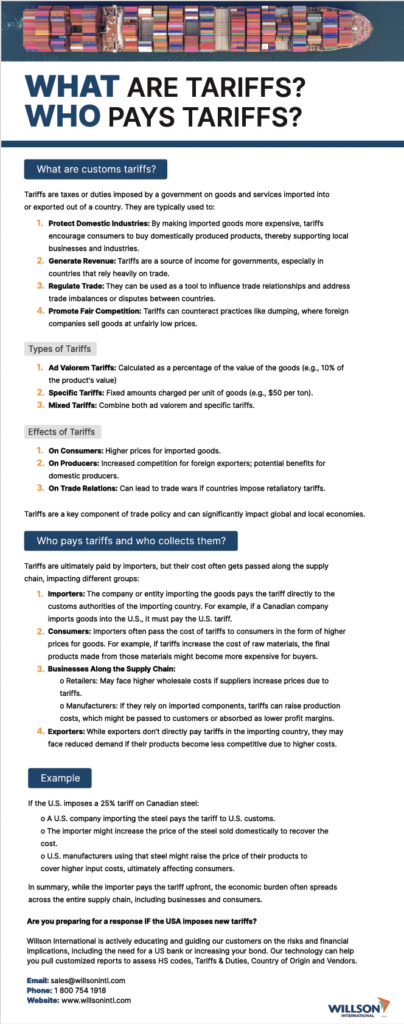Add your feed to SetSticker.com! Promote your sites and attract more customers. It costs only 100 EUROS per YEAR.
Pleasant surprises on every page! Discover new articles, displayed randomly throughout the site. Interesting content, always a click away
Willson International
Leading U.S - Canada Customs Brokerage and Logistics ServiceWhat you need to know about tariffs. 10 Mar 2025, 10:54 pm

The post What you need to know about tariffs. first appeared on Willson International.
CBP APPOINTS BRIAN BARBER… 11 Feb 2022, 3:26 pm
CBP Appoints Brian Barber to COAC Committee; WCO Update; CARM Update
The post CBP APPOINTS BRIAN BARBER… first appeared on Willson International.
For the want of a truck driver…. 28 Jan 2022, 7:09 pm
For the want of a truck driver…..
The post For the want of a truck driver…. first appeared on Willson International.
Health Canada Moves to Single Window on August 17, 2020 26 Nov 2021, 3:58 pm
The post Health Canada Moves to Single Window on August 17, 2020 first appeared on Willson International.
Why is there a container shortage? Why are freight rates so high? 26 Nov 2021, 3:58 pm
The post Why is there a container shortage? Why are freight rates so high? first appeared on Willson International.
CARM IS COMING. ARE YOU READY? 26 Nov 2021, 3:58 pm
The post CARM IS COMING. ARE YOU READY? first appeared on Willson International.
The State of Shipping, July 2021. Plan ahead. 26 Nov 2021, 3:58 pm
The post The State of Shipping, July 2021. Plan ahead. first appeared on Willson International.
CUSMA: Key Resources from the Government of Canada 26 Nov 2021, 3:57 pm
The post CUSMA: Key Resources from the Government of Canada first appeared on Willson International.
CARM IS COMING. ARE YOU READY? 26 Nov 2021, 3:57 pm
The post CARM IS COMING. ARE YOU READY? first appeared on Willson International.
Health Canada Moves to Single Window on August 17, 2020 26 Nov 2021, 3:57 pm
The post Health Canada Moves to Single Window on August 17, 2020 first appeared on Willson International.